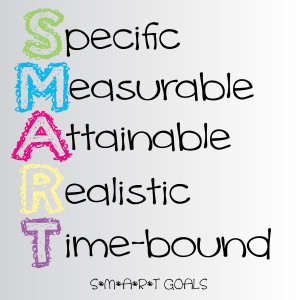Share This Article
 Hockey and soccer goals are great. Savings goals, however, are the best. Buying a new laptop, car, or house feels great, especially when you’ve scrimped and saved to make that purchase happen.
Hockey and soccer goals are great. Savings goals, however, are the best. Buying a new laptop, car, or house feels great, especially when you’ve scrimped and saved to make that purchase happen.
This feeling of pride and satisfaction is something that most kids experience in their school or sports lives, but not in their financial lives. While finances aren’t as important to kids for dozens of reasons, but the habits they develop in childhood will last well into adulthood.
When I work with kids, I teach them the concept of SMART Goals. SMART, which is an acronym for specific, measurable, attainable, realistic, and time-bound, walks children through a wonderful process for setting goals.
Specific
Youngsters can have a hard time describing something in a specific manner. They may say they’re saving for a mansion, a car, or a Lego set. My response is always a series of questions: “Which mansion? Where? Is it beautiful or falling down? Will you furnish your mansion? Do you want servants?” I love doing this with kids because, depending on the student’s age, I might get a blank stare or legitimate answers. In doing this, I open up a whole new way of thinking about mansions (or cars or Legos), which is that there are tons of variables that could affect the price.
Measurable
Of course, the price is an important piece of information and falls into the measurable category. As adults, we instinctively know the general cost of things, but children don’t generally have the knowledge base to guess what something will cost. For this reason, I usually give them my best guess or have them research the cost.
Attainable
Most elementary kiddos don’t know what the word “attainable” means, so I explain to them that it’s simply something they have the resources for. Even if they don’t currently have the means to save for their goal at the moment, if they know how to get the resources, they’re alright.
Realistic
I enjoy using my husband’s idea of a helicopter car when discussing whether or not a goal is realistic. Obviously, we can’t go out and buy a helicopter car (yet) and your child should make sure their goal is a real thing, too.
Time-Bound
The last aspect of a SMART Goal is that it must be time-bound. I enjoy relating this idea to their homework. The teacher assigns a due date; the students (supposedly) turn their work in on time. It’s the same thing for money. If kiddos have a deadline for achieving their goal, they’re more likely to achieve it.
http://youtu.be/UcXsDacvVLI


